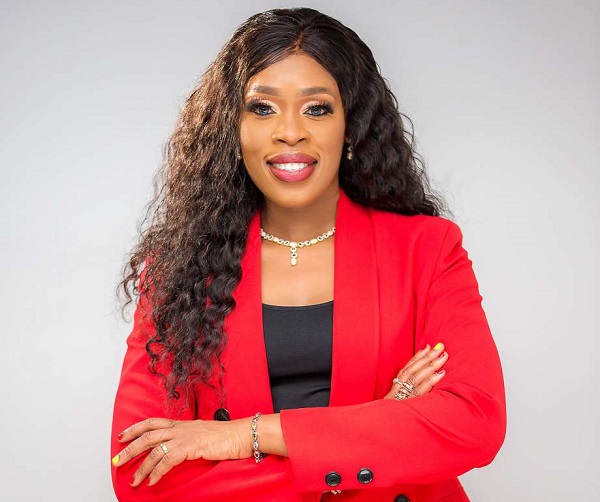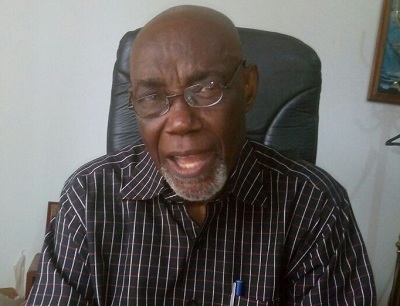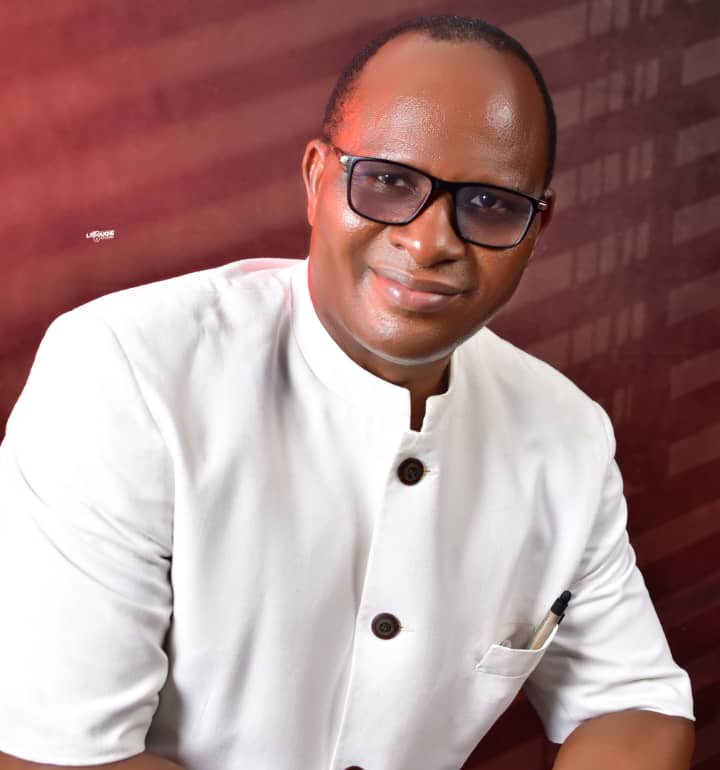Low Level Of Exposure, Literacy Hinder Women’s Fiscal Education – Akpaida

According to the World Bank, there is a 14 per cent gap between men who own bank accounts and women who don’t. What this means is that more women (than men) are financially excluded even though they are major drivers of the informal economy and the more popular caregivers at the domestic front. This is the reason Onyeka Akpaida is leading a campaigner through the Rendra Foundation, to improve the resilience and economic outcomes of underserved women by encouraging them to become financially included and financially literate.
What does Financial Inclusion mean?
Financial inclusion is a process, which gives individuals access to useful and affordable financial products and services that meet their needs. These include banking services such as payments and savings, credit and insurance – delivered in a sustainable way. The four dimensions of financial inclusion are: access, use, quality and impact on financial well-being or health. Access is one thing, usage is another. When the financial product meets the needs of the users and they are properly educated on financial capability and what the product entails, they will most likely use the service. Financial products that come with additional services such as insurance, pension, etc. create even better outcomes generally, especially for women.
What really motivated you to focus on gender disparity and Financial Inclusion in Africa?
Growing up, the life I was accustomed to hit a curveball in 1996 when my dad was retrenched from the job he’d had for close to two decades. This unexpected occurrence could have thrown my family into utter poverty. Thankfully, my mum owned a grocery store and leveraging her financial literacy and astuteness, she was able to keep us afloat and move the family from financial instability to relative stability.
I remember her having an account with First Bank; she was also involved in the informal ajo (rotating savings and loans system), which enabled her to easily access loans. I shudder to think of the alternative if my mum had no trading business going.
Unfortunately, 24 years later, we still have 20+ million adult women in Nigeria who are financially excluded, with the Northern regions having the highest numbers. In Nigeria, there is a 14 per cent gap between the number of men and women that own bank accounts. I started Rendra Foundation to close this gap and empower low-income and migrant women through financial inclusion, financial literacy, and microcredits to enable them to earn money and create sustainable change for themselves, their families and communities. When a woman has access to relevant financial services and products, she contributes immensely to the well-being of her family. Every time I see a woman move from utter poverty to some level of economic stability, it keeps me going. I recognise that with women in the demography we serve, you don’t need to take them all the way up, just help place them on the first steps on the ladder, and they can continue the climb to the top.
How has COVID-19 affected the economy and women’s financial inclusion?
Before the outbreak of COVID-19, statistical evidence across the world showed that women are disadvantaged in access to education, opportunities, resources, decision making powers and gender pay gaps in addition to asserting their reproductive rights. The pandemic has further exacerbated these vulnerabilities and has had a greater negative impact on their livelihood particularly for those in developing countries like Nigeria. Like other pandemics, COVID-19 impacts women differently and it deepens pre-existing gender inequalities.
Secondly, the informal sector contributes about 41 per cent of Nigeria’s economic output, with more women employed in this sector as receptionists, housekeepers, flight attendants, restaurant service staff, hairdressers, domestic workers, etc. Owners of these informal businesses had to either shut down completely or downsise significantly as their businesses are sustained by daily income. Consequently, the women employed in this sector have suffered a significant loss of employment or income further widening the financial exclusion gap.
The burden of domestic care largely rests on women or adult girls and with the outbreak and worsening of the virus; this burden increased and further exposed them to the virus as primary caregivers. This is a disheartening situation for these women especially in Nigeria where healthcare and social infrastructure are inadequate, compromised and overstretched.
Not to mention the increased cases of domestic violence that the confinement measures put in place to curb the spread of the virus, have triggered. Women and girls living with abusive spouses, parents or siblings were locked indoors with their abusers. Agencies and organisations focused on domestic abuse had to up the ante in terms of awareness and communication of helplines for victims.
In your opinion, what obstacles have hindered the growth of women’s financial education?
Primarily, it’s the low level of exposure and literacy, which is an offshoot of challenges in girl-child education. An uneducated girl-child will most likely be an uneducated woman unless she intentionally decides to make a change. Another obstacle is the cultural and societal perception of women as homemakers rather than ‘providers.’ In many parts of the world, men (husbands) play an important role in decision-making and are often considered as the only decision maker in the family. In such situations, the women will naturally defer to the men with regards to family finances and this further inhibits them from getting financially educated.
The final obstacle I would like to consider is the ‘One-Size-Fits-All’ intervention approach. As much as we have a firm grasp on what needs to be done to improve the well being of these women, interventions need to consider the peculiarity of their situation. For instance, when planning a financial education session, you must take into cognizance the times the women have to handle households’ responsibilities and business responsibilities to improve the outcomes of your interventions. Their level of education and exposure should also be considered in planning the intervention method to be used.
How can working with existing formal financial institutions and the government increase and improve female participation in economic activities?
I’ll use my organisation (Rendra Foundation) as an example. We work with banks to facilitate the account opening process while we handle financial literacy training in house and work with partners like Black Copper to help with funding for the women at low interest rates. With our work, we are closing the financial exclusion gap which is a critical focus for the Central Bank of Nigeria and we will continue to advocate for policies and provide thought leadership that the government can use in formulating policies to improve the economic empowerment of women.
Already, we have brought in 120+ women into formal financial services and conducted financial literacy training for them. We have also partnered with organisations to teach some women skills in making personal care products, bags, raffia and basket weaving. Our focus for this year is the Internally Displaced women and we’re exploring different approaches to working with the government and other stakeholders towards reintegrating them into the society. Many of these women are living in camps in peri-urban areas, close to opportunities for access, yet they are cut off from access to finance, credits and employment. The COVID-19 situation has slowed our programme timelines for them but we have resumed work towards bringing in another 100 women into formal financial services and to give them micro-credits to ramp up their businesses.
What would you describe as Rendra Foundation’s biggest success story?
It has to be Asabe. Asabe is a widow and mother, who sell bananas and other seasonal fruits at a junction close to my office because it highlights a critical lesson for financial services providers. One day, I bought fruits worth N2,000 and did not have enough cash so I asked her if she had an account I could transfer the balance to. She laughed so hard and said: ‘Haba Aunty, where I for wan see account; no be my type dem dey find for bank o.’ The interesting thing about Asabe’s situation was that her stall was (still is) only a few metres from a bank building yet she was financially excluded. I decided to educate her on the importance of having an account and how being financially literate could improve her business. She did not seem totally convinced but she decided to open an account anyway.
A couple of months later, she thanked me for that advice as she had been consciously saving the little proceeds from her business and now had an additional tray of fruits and table to her stall. Asabe’s story reminds me of how easy it is to overlook people living or working near environments with access to finance on the assumption that their proximity to opportunities implies financial inclusion. Deliberate work needs to be done to ensure that people are financially included regardless of where they live. We have decided to focus on the most-excluded group: women.
What kind of policies would you like to see implemented in order to deepen Financial Inclusion for Women?
There is an urgent need for policy makers to critically review existing policies and implementation methods; paving way for enhancement and improved outcomes. I would like to see policies designed to build resilience in the informal sector, against financial shocks and emergencies. We want real impact, tailored, intentional impact- to coin a phrase I like, ‘Don’t colour it Pink and call it Financial Inclusion for Women.’
At the onset of the pandemic, the Central Bank of Nigeria announced a fifty billion Naira loan support for businesses affected by COVID-19. How many businesses in the informal sector gained access to these funds? How many women-owned small businesses like salons and traders of non-essential items were beneficiaries? Empowering women should form a part of the country’s economic pillars for growth and stability, as it is pivotal in lifting some of the poorest communities out of poverty. Women are more likely to spend on their children and families before considering their personal well-being and so when the earnings of women increase, the wellbeing of their entire household improves.
You can only improve what you can measure, which is why collecting and tracking gender-disaggregated data is sacrosanct if we are to close the gender gap. When we track financial inclusion metrics by gender, it allows all stakeholders to measure policies, practices and innovations to see if they are actually reaching the intended population, and to devise strategies to accelerate the ones that are working or to adjust the ones that are not effective. Digital financial services and financial technology can act as catalysts for financial inclusion, so there should be lower barriers to entry and transaction costs to drive its adoption. Policy support must offer relevant, practical and scalable solutions that will facilitate easier access to digital micro credit and microinsurance to build financial resilience for low-income women.
Finally, there is the crucial need to have a better understanding of the women’s segment particularly the under-served demography. The most successful financial products and services will be those tailored by the knowledge of these women, understanding their business niches and created for their specific needs. If more financial service providers recognize these women as clients and not as charity cases, they will reap the benefits. Women are longer-term savers and will become loyal and profitable customers; with better loan repayment records. It is important that gender dimensions are considered in designing post COVID-19 recovery policies to ensure no one is left behind.
Culled from TheGuardian







